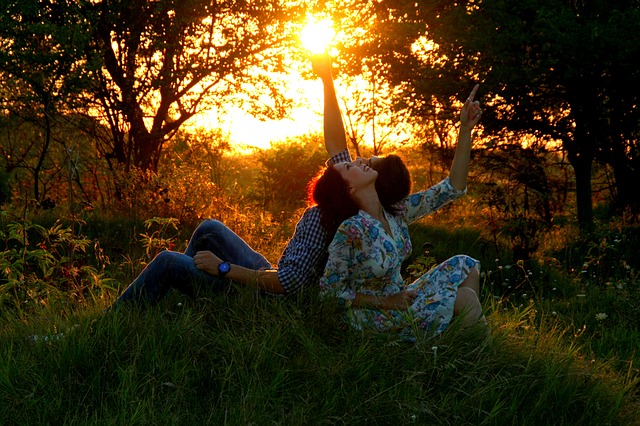 get elephant's newsletter
get elephant's newsletter
*Elephant is not your doctor or hospital. Our lawyers would say “this web site is not designed to, and should not be construed to provide medical advice, professional diagnosis, opinion or treatment to you or any other individual, and is not intended as a substitute for medical or professional care and treatment. Always consult a health professional before trying out new home therapies or changing your diet.” But we can’t afford lawyers, and you knew all that. ~ Ed.
~
“Be like the flower, turn your face to the sun.” ~ Kahlil Gibran
~
The summer solstice is the longest day of the year in the Northern Hemisphere, and it is also when the sun is at its highest point in the sky. This year the summer solstice falls between Tuesday, June 20th, and Wednesday, June 21st, depending on the timezone.
Solstice is the Latin word for “sun stands,” as the sun appears to be standing still all day. Therefore, to align with the vibration of the sun on this day, we can also remain still and peaceful and fully absorb the benefits it has to offer.
Across the world, during ancient times, people of every culture worshipped the sun with many people building monuments to honor it. These monuments were arranged at these sites in a specific way so that there was a direct alignment with the sun and where the sacred altar was placed. This meant that at the exact time of sunrise on the solstice, the sun shone directly on the altar.
In the United States at the top of the Bighorn Range in Wyoming, which is 9,642 feet high and only reachable during summer, is Wyoming’s Bighorn medicine wheel. This wheel is a stone arrangement built by the Native Americans and was designed to align with the solstice at sunrise and sunset.
During the solstice, the Sioux tribe annually performs the wi wanyang wacipi, a “sun gazing dance,” to symbolize the harmony between all living things.
At Stonehenge in the United Kingdom, approximately 5,000 years ago, a monument was built out of stones so that the rising sun reaches the middle of the stones when it shines on the central altar on the summer solstice and the sun sets along the back of the tallest stone.
The alignment between the sun and these monuments only happens on the solstice, which is why so many people gather at these sacred sites to celebrate and hold rituals.
The summer solstice brings more light than any other day of the year, therefore it is an optimum time for energizing and manifesting energy—so I always ensure I head outdoors to catch the sunset and the sunrise. The sun is the vital source of all life, and through connecting with it during the practice of sun gazing, my mind, body, and soul are infused and thoroughly nourished thanks to its powerfully healing solar energy.
Hira Ratan Manek, more commonly known as HRM, introduced sun gazing to the Western world after spending many years researching and experimenting. He claims that the sun can help to heal the mind, body, and spirit as it harmonizes and recharges the body with vital life force energy. Both Thomas Jefferson University and the University of Pennsylvania studied HRM and found his claims to be true.
For sun gazing to be most effective and for maximum absorption of its healing rays, it is recommended to be receptive to the sun’s radiant glow, rather than attempting to practice meditation, prayer, or other rituals at the same time.
Sun gazing is a simple practice that only requires me to be fully present and with my focus on the connection between my self and the sun.
As sun gazing is a cleansing practice, I always drink a glass of water before and after sun gazing to help remove toxins. I find that water grounds and balances me, as water is yin and the sun’s energy is yang.
I find that sun gazing alleviates any anxiety, stress, or tension I am feeling. It also rejuvenates me by increasing my energy levels, enhancing my awareness, and heightening my concentration levels. I also find that my ability to manifest my goals and desires increases when I practice sun gazing regularly.
The safest and most optimum times of the day to practice sun gazing are one hour after sunrise or one hour before sunset, as this is when the suns ultraviolet rays are closest to zero. It is not recommended to sun gaze at any other time of the day as the sun’s ultraviolet rays can damage the eyes. So be careful!
To practice sun gazing, I sit or stand with bare feet on the earth or sand, my arms outstretched (it can be done with arms by the sides) and with my hands spread out facing upwards toward the sun.
I soften my gaze, and look upwards toward the sunrise or sunset.
The first time I sun gazed, I only held my gaze for approximately 10 seconds and then blinked and looked away. (It is not recommended to look at the sun for longer than 10 seconds when sun gazing for the first time.)
I then cover both my eyes by placing the palms of my hands to my eyes, and I gaze at the afterimage of the sun until it fades away.
I put my hands to my chest in prayer position and spend a few moments sending love and gratitude to the sun.
I always end this practice with a barefoot walk, preferably on natural earth or sand near to a river or ocean where possible, as the soles of the feet are receptive and absorb solar energy.
For the first three months after beginning sun gazing, I increased the time spent gazing at the sun by adding 10 seconds to my practice each day.
After nine months of practice, I ceased sun gazing, as recommended by HRM, as once the nine-month mark is reached, it is believed we have then gained optimum benefit from this practice. Barefoot walking is then recommended to replace sun gazing, as it also charges the mind, body, and spirit with solar energy.
As I have now completed the nine-month sun gazing practice suggested by HRM, I now only sun gaze for 10 seconds on the summer and winter solstices and take an energizing and revitalizing barefoot walk every day.
Wishing you a happy, harmonious, and abundant summer solstice!
This article is a description of my own practice that was written for information purposes only and not an intention to recommend sun gazing.
Sun gazing is not for everyone, therefore if you wish to partake, I would strongly recommend researching the practice in-depth and for any concerns consult a health professional.
~
~
~

No comments:
Post a Comment